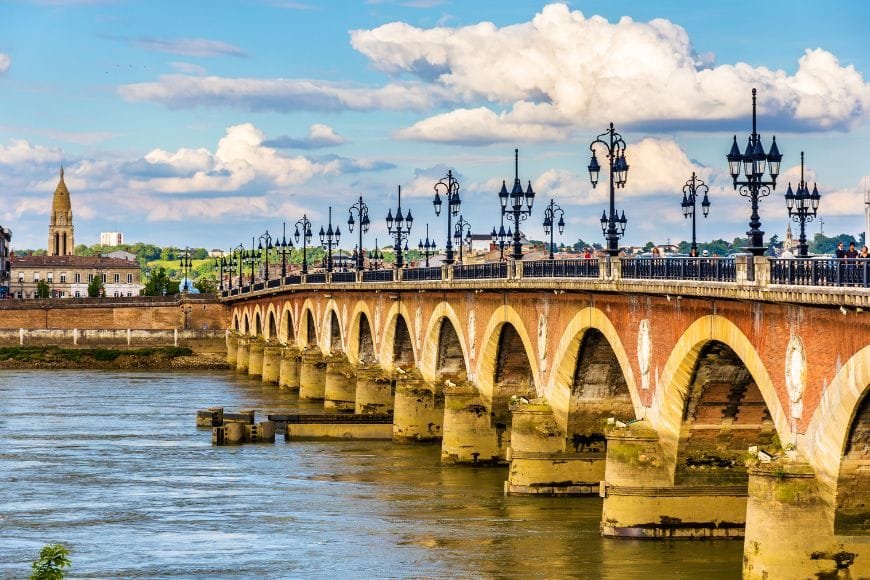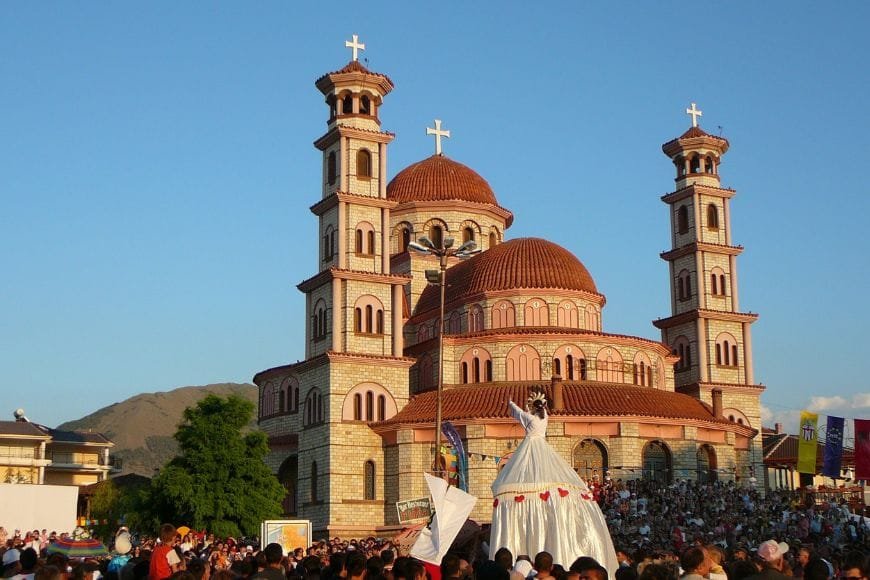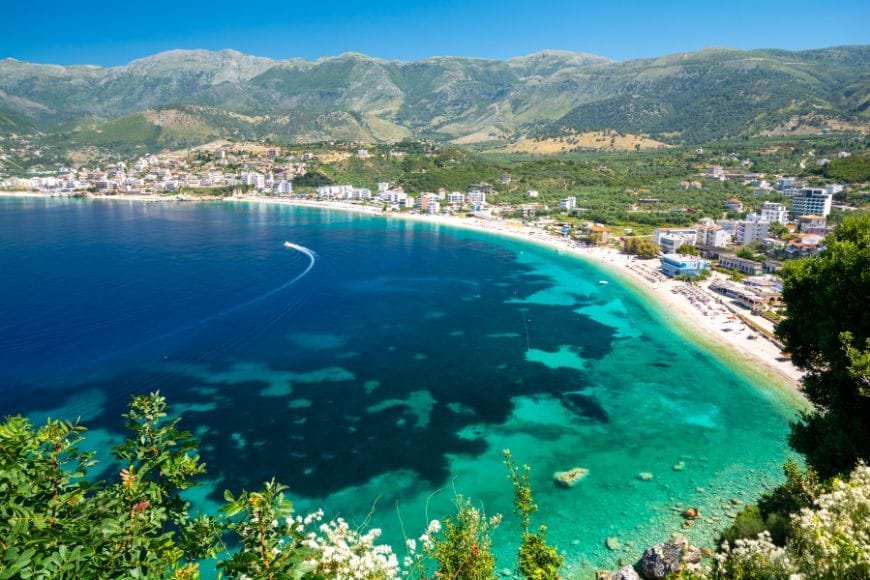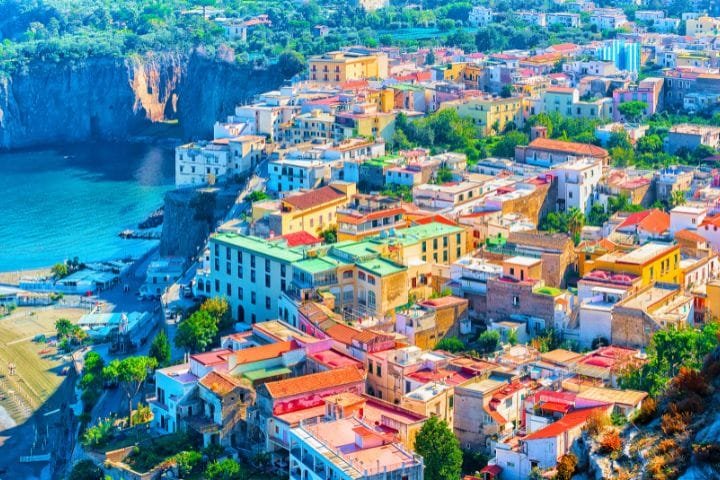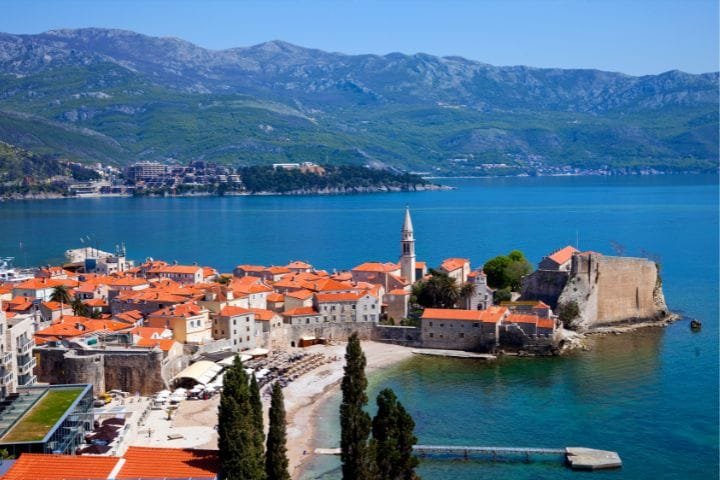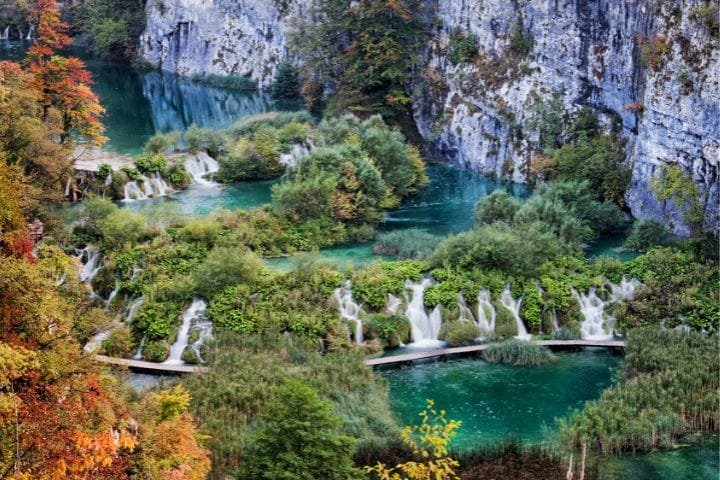Fuel Prices and Gas Stations in Italy: 2025 Guide for Drivers

by Abu | Last Updated November 16, 2025
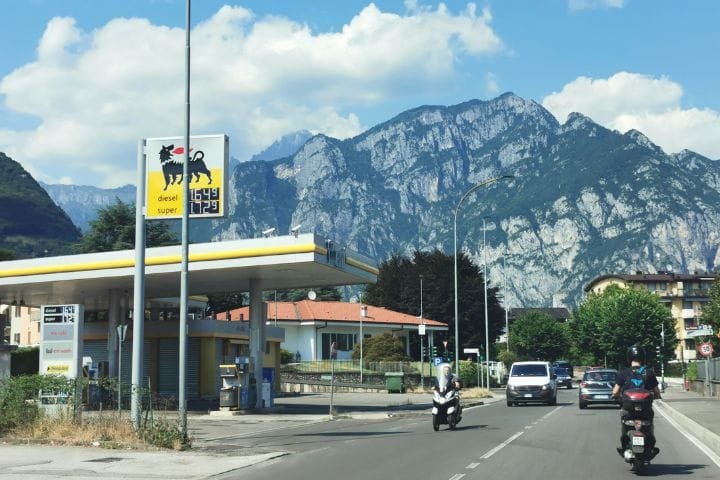
Ciao! As someone who has lived in Italy for over two decades and driven countless kilometers across our beautiful peninsula, I can tell you that understanding the fuel system is essential for anyone planning to drive in Italy.
Did you know that Italy has some of Europe’s highest fuel taxes, making gasoline and diesel prices among the most expensive on the continent? But here’s what most visitors don’t realize – there are substantial price differences between highway rest stops and local stations, between self-service and full-service options, and even between different regions of the country.
After years of experience filling up everywhere from remote mountain villages in the Alps to busy autogrill stations on the A1, I’ve learned the insider tricks that help locals save money while ensuring you never get stuck with an empty tank in the middle of nowhere.
From understanding the differences between benzina (gasoline), gasolio (diesel), and GPL (LPG), to knowing which credit cards work at automated pumps and which stations offer the best prices, this fuel prices and gas stations in Italy guide shares the local knowledge that will help you navigate Italy’s fuel landscape like a resident rather than a tourist.
Whether you’re planning scenic drives through Tuscany, exploring the Amalfi Coast, or simply commuting in Italian cities, understanding our fuel system will make your driving experience smoother, cheaper, and more enjoyable!
Current Fuel Prices in Italy (2025)

Average national prices for different fuel types as of 2025 reflect both global oil markets and Italy’s substantial fuel taxes, which make Italy one of Europe’s most expensive countries for driving. Currently, you’re looking at approximately €1.65-1.75 per liter for benzina (gasoline), €1.55-1.65 per liter for gasolio (diesel), and €0.70-0.80 per liter for GPL (LPG).
These prices fluctuate weekly based on global oil markets and government tax adjustments, but the relative relationships between fuel types remain fairly consistent. Diesel typically costs about 10 cents less per liter than gasoline, while GPL offers substantial savings at roughly half the price of traditional fuels.
Regional price variations across Italy can be dramatic and often surprise even us locals. Generally, northern regions like Lombardia and Veneto have slightly lower prices due to better infrastructure and competition, while southern regions and islands see higher costs due to transportation and distribution factors.
The most expensive fuel in Italy is typically found in Sicily and Sardinia, where island logistics add €0.05-0.10 per liter compared to mainland prices. Conversely, regions near refineries like Liguria sometimes offer better prices due to reduced transportation costs.
Highway vs local station price differences represent the biggest potential savings opportunity for drivers. Highway autogrill stations typically charge €0.15-0.25 more per liter than local stations just off the highway. This premium covers convenience, 24/7 availability, and additional services, but it adds up quickly for large fills.
Seasonal fluctuations and market trends follow predictable patterns that locals learn to anticipate. Summer driving season (June-August) typically sees higher prices due to increased demand, while winter months often provide some relief. Holiday periods like Ferragosto (mid-August) can spike prices temporarily.
Price comparison with European neighbors shows Italy consistently ranking among the most expensive, though not quite reaching Swiss or Norwegian levels. Our fuel taxes fund substantial infrastructure investments, but they definitely impact driving costs compared to countries with lower tax rates.
Current price breakdown by fuel type:
- Benzina (gasoline): €1.65-1.75 per liter
- Gasolio (diesel): €1.55-1.65 per liter
- GPL (LPG): €0.70-0.80 per liter
- Super Plus (high octane): €1.75-1.85 per liter
- AdBlue (diesel additive): €0.60-0.70 per liter
Types of Fuel and Stations in Italy

Benzina (gasoline) grades and octane ratings in Italy follow European standards with some local variations. Standard benzina has 95 octane rating (equivalent to 91 octane in North America), while Super Plus offers 98 octane for high-performance vehicles. Most modern cars run perfectly on standard benzina, despite what rental car companies might suggest.
I’ve driven everything from tiny Fiat 500s to powerful German sedans on standard benzina without any issues. The higher octane Super Plus is generally unnecessary unless you’re driving a true high-performance vehicle or the manufacturer specifically requires it.
Gasolio (diesel) types and additives include standard diesel and premium variants with additional cleaning agents. Italian diesel meets European EN590 standards and works in all modern diesel vehicles. Some stations offer premium diesel with additives that claim to improve performance and engine cleanliness.
Winter diesel (available October through March) includes anti-gel additives essential for mountain driving and northern regions where temperatures drop significantly. Most stations automatically switch to winter blends, but it’s worth confirming if you’re driving in Alpine areas.
GPL (LPG) availability and compatibility have expanded dramatically over the past decade as Italian drivers seek alternatives to expensive traditional fuels. GPL stations are now common throughout most of Italy, though still limited in some rural mountain areas.
Converting a gasoline vehicle to GPL typically costs €1,200-2,000 but pays for itself through fuel savings within 2-3 years for regular drivers. The savings are substantial – GPL costs roughly half the price of gasoline with only slightly reduced fuel economy.
Electric charging stations and infrastructure are expanding rapidly, especially in northern and central Italy. Major networks like Enel X, BeCharge, and Tesla Superchargers provide increasingly comprehensive coverage, though charging times still require planning compared to traditional refueling.
Hydrogen fuel cell stations remain experimental with very limited availability, primarily around Milano and other major cities participating in pilot programs. This technology isn’t yet practical for regular consumer use in Italy.
Essential fuel terminology:
- Benzina: Gasoline/petrol
- Gasolio: Diesel fuel
- GPL: LPG (Liquefied Petroleum Gas)
- Servito: Full service (attendant fills tank)
- Fai da te: Self-service
- Pieno: Fill up the tank
- Lavaggio: Car wash
Gas Station Types and Service Options in Italy

Self-service (servizio fai da te) vs full-service stations offer different experiences and pricing structures. Self-service stations typically offer lower prices (€0.02-0.05 per liter savings) but require understanding the payment and pumping procedures that can confuse first-time visitors.
Full-service stations provide attendants who fill your tank, check oil and tire pressure, and clean windshields. While convenient, especially for international visitors, the service premium and customary tip (€1-2) add to overall costs.
Autogrill highway service areas represent Italy’s premium fuel option with extensive additional services. These stations offer 24/7 availability, restaurants, shopping, restrooms, and tourist information, but charge premium prices for both fuel and services.
Autogrill stations are strategically located every 50-80 kilometers on major highways and provide essential services for long-distance travel, despite the higher costs. The food quality at Autogrills has improved significantly and often rivals regular restaurants.
Local branded stations (ENI, IP, Q8, Tamoil) form the backbone of Italy’s fuel distribution network. ENI (Agip) is Italy’s largest network with extensive coverage, while IP, Q8, and Tamoil offer competitive alternatives with their own loyalty programs and pricing strategies.
Each brand maintains quality standards and offers slightly different services, but fuel quality is consistently high across all major brands. Price competition between brands can create local variations worth investigating.
Hypermarket fuel stations (cheaper options) at shopping centers like Carrefour and Coop typically offer the lowest prices available. These stations sacrifice some convenience and services for significant savings, often €0.05-0.10 per liter below traditional stations.
Shopping center stations work perfectly for planned fuel stops combined with grocery shopping, though they typically have limited hours and may not be convenient for highway travel.
Rural and mountain area fuel availability becomes more limited and expensive as you venture into remote areas. Mountain villages often have only one station with limited hours and higher prices due to transportation costs and lower volume.
Planning fuel stops becomes crucial when driving in rural areas, especially during off-season when some stations may close entirely or operate severely reduced hours.
Station type comparison:
- Autogrill highway: Highest prices, best services, 24/7 availability
- Brand stations: Moderate prices, good services, varied hours
- Hypermarket: Lowest prices, basic services, limited hours
- Rural stations: Higher prices, limited services, seasonal variations
- Self-service: Lower prices, no services, payment complexity
Payment Methods and How They Work

Cash payments and exact change requirements remain important because many automated pumps require exact change or only accept specific denominations. Machines typically accept €5, €10, €20, and €50 notes, but coin requirements vary by station and can be frustrating for unprepared drivers.
I always carry a variety of small bills and coins specifically for fuel purchases because running out of cash at a rural station with no attendant can create serious problems, especially late at night or on Sundays.
Credit and debit card compatibility has improved dramatically, but challenges remain with international cards and specific pump systems. Italian-issued cards work reliably, while foreign cards may be rejected due to security protocols or technical incompatibilities.
Chip-and-PIN cards generally work better than magnetic stripe cards, and having multiple payment options prevents getting stuck with an unusable card at a critical moment. Some pumps require PINs even for cards that normally use signatures.
Automated pump payment systems vary by station brand and age, creating inconsistent user experiences. Newer systems accept contactless payments and mobile apps, while older pumps may require specific procedures that aren’t immediately obvious to first-time users.
The typical process involves selecting fuel type, inserting payment, choosing amount (specific euro value or “fill tank”), then pumping fuel. However, variations between systems can cause confusion and frustration.
Fuel cards and loyalty programs offer savings for regular drivers through volume discounts and promotional offers. Programs like ENI’s Enjoy, IP’s Smile, and Q8’s Easy provide points, discounts, and sometimes free services like car washes.
These programs work best for residents or frequent visitors who can accumulate enough volume to justify membership. Tourist-focused rental car fuel cards typically don’t offer the same savings potential.
Mobile payment apps and digital solutions are becoming increasingly popular, especially among younger Italians. Apps like PayPal, Apple Pay, and Google Pay work at equipped stations, while specific fuel brand apps offer additional features and discounts.
Payment method success strategies:
- Carry variety of cash denominations (€5, €10, €20 notes plus coins)
- Have multiple cards available (chip-and-PIN preferred)
- Download fuel brand apps for better payment reliability
- Learn basic pump operation procedures before traveling
- Keep receipts for expense tracking and potential dispute resolution
Highway Fuel Stations vs Local Alternatives

Autostrada rest stop pricing reflects convenience premium that can add €8-12 to a typical tank fill compared to local alternatives. This premium covers 24/7 availability, extensive services, prime highway locations, and higher operational costs.
For emergency fuel stops or when time is critical, highway stations provide essential services despite higher costs. However, planning fuel stops at local stations near highway exits can provide substantial savings without significant inconvenience.
Finding cheaper alternatives near highway exits requires local knowledge and planning, but can save significant money over long trips. Many highway exits have fuel stations within 1-2 kilometers that offer substantially lower prices.
GPS apps and fuel price comparison websites help identify nearby alternatives, though detour time and traffic conditions must be factored into savings calculations. Sometimes the time and fuel spent reaching cheaper stations negates potential savings.
Timing strategies for highway fuel stops can minimize premium pricing impacts. Early morning and late evening often see lower traffic and sometimes modest price reductions, while peak travel periods may see even higher premiums.
Weekend and holiday pricing can spike significantly at highway stations due to increased leisure travel demand. Planning fuel stops during weekdays or off-peak hours provides better value.
Services available at highway stations justify premium pricing for many travelers. Clean restrooms, restaurants, shopping, tourist information, and 24/7 availability create value beyond just fuel provision.
Highway stations also provide essential emergency services, breakdown assistance contact information, and often have English-speaking staff to help international travelers with problems or questions.
Emergency fuel situations on highways sometimes leave no choice but to accept premium pricing. Running out of fuel on Italian highways can result in expensive towing charges and safety risks that far exceed fuel cost savings.
Emergency fuel delivery services exist but cost €50-100 plus fuel charges, making even expensive highway station prices seem reasonable by comparison.
Highway vs local station strategies:
- Plan fuel stops at local stations near highway exits when possible
- Use highway stations for emergencies and extended service needs
- Factor detour time and traffic into savings calculations
- Keep tank above 1/4 full to avoid emergency situations
- Research alternative stations along planned routes in advance
Regional Price Variations and Trends

Northern Italy pricing patterns generally offer the lowest fuel prices nationally due to better infrastructure, higher competition, and proximity to refineries. Regions like Lombardia, Veneto, and Piedmont typically see prices €0.02-0.05 per liter below national averages.
The concentration of major industrial centers and transportation hubs in northern Italy creates economies of scale that benefit consumers through increased competition and efficient distribution networks.
Central Italy fuel costs including Tuscany, Lazio, and Umbria typically track national averages closely, with Rome area prices sometimes slightly elevated due to urban premiums and tourist demand. Florence and other tourist centers may see modest price increases during peak season.
Southern Italy and island price differences reflect transportation costs and infrastructure challenges that can add €0.05-0.15 per liter compared to northern regions. Sicily and Sardinia consistently rank among Italy’s most expensive regions for fuel due to island logistics.
Calabria, Puglia, and other southern mainland regions fall between northern and island pricing, though rural areas within these regions may see higher prices due to limited competition and distribution challenges.
Border area pricing dynamics create interesting variations based on neighboring country policies. Areas near Switzerland sometimes see elevated prices due to cross-border shopping by Swiss residents seeking lower Italian prices despite Italy being expensive by European standards.
French border areas may see competitive pricing due to proximity to French stations, while Austrian border regions sometimes experience price premiums due to limited alternative suppliers.
Urban vs rural price disparities can be substantial within regions. Major cities typically offer competitive pricing due to volume and competition, while rural and mountain areas may see significant premiums due to transportation costs and limited competition.
Rural pricing becomes particularly challenging in mountain valleys with single stations serving entire communities. These monopolistic situations can result in prices €0.10-0.20 above regional averages.
Regional pricing insights:
- Northern Italy: Generally lowest prices nationally
- Central Italy: Close to national averages with tourist area premiums
- Southern Italy: Moderate premiums due to transportation costs
- Islands: Highest prices due to logistics challenges
- Border areas: Variable pricing based on neighboring country dynamics
Money-Saving Strategies for Fuel Purchases

Best times to fill up for lower prices include weekday mornings and avoiding holiday periods when demand spikes pricing. Many stations adjust prices Monday mornings based on weekly market conditions, making Tuesday-Thursday optimal for lower prices.
Avoiding Friday afternoon and Sunday evening travel periods helps dodge premium pricing when leisure travelers create demand spikes. Some stations also offer lower prices during overnight hours to encourage off-peak purchasing.
Loyalty card programs and discounts can provide substantial savings for regular drivers through accumulated points, volume discounts, and exclusive promotional offers. Programs typically require minimum annual spending to achieve meaningful benefits.
ENI’s Enjoy program offers points redeemable for fuel discounts, while IP’s Smile provides direct per-liter discounts after reaching spending thresholds. Q8’s Easy program includes partnerships with other retailers for broader point accumulation opportunities.
Bulk purchasing strategies work well for residents with vehicles capable of carrying extra fuel. Some stations offer modest discounts for large purchases, though safety regulations limit how much fuel can be legally transported in containers.
For frequent long-distance drivers, timing major fill-ups in lower-price regions can provide savings that accumulate over time. Planning northern Italy fuel stops when traveling south can result in meaningful cost reductions.
Alternative fuel options for savings like GPL (LPG) can reduce fuel costs by 40-50% compared to gasoline, though vehicle conversion costs must be factored into savings calculations. Electric vehicles offer even greater potential savings where charging infrastructure supports travel needs.
Apps and websites for price comparison help identify local price variations and plan optimal fuel stops. Italian apps like “Prezzi Benzina” and “Carburanti” provide real-time pricing information from stations nationwide.
European fuel price comparison websites also cover Italy and can help plan cross-border trips to optimize fuel purchasing decisions based on regional price differences.
Effective money-saving tactics:
- Use loyalty programs for volume discounts and promotional offers
- Time purchases for weekday mornings and off-peak periods
- Plan fuel stops in lower-price northern regions when possible
- Consider GPL conversion for vehicles with high annual mileage
- Use price comparison apps to identify local variations
- Avoid highway stations except for emergencies
Navigating Italy’s Fuel Landscape Like a Local
After two decades of driving throughout Italy, I can tell you that understanding our fuel system is really about understanding Italian culture and business practices. We operate on relationships, local knowledge, and logical systems that work well once you understand the underlying principles.
What I’ve learned over the years is that successful fuel management in Italy comes from matching your strategy to your specific situation. Tourists on tight schedules may find highway station premiums worthwhile for convenience, while residents and long-term visitors benefit from learning local price patterns and loyalty programs.
My current approach involves using brand loyalty programs for regular driving, planning fuel stops at local stations near highway exits for long trips, and keeping emergency cash for rural stations that might not accept international cards. This strategy minimizes costs while ensuring I never get stranded.
The fuel landscape in Italy continues evolving with new payment technologies, alternative fuels, and changing regulations. Staying informed about these changes and maintaining flexible strategies helps ensure smooth travels whether you’re exploring our beautiful countryside or navigating urban traffic.
Drive safely, fuel wisely, and enjoy discovering our magnificent country from the comfort of your vehicle. With proper understanding of our fuel systems, you’ll find that driving in Italy becomes not just viable, but one of the most rewarding ways to experience our diverse regions, spectacular scenery, and warm hospitality!
FAQs on Fuel Prices and Stations in Italy
What are the current fuel prices in Italy?
As of 2025, fuel prices in Italy typically range from €1.80 to €2.20 per liter for gasoline and €1.70 to €2.00 per liter for diesel. Prices vary by location, with highway stations usually being more expensive.
Is fuel cheaper at self-service stations in Italy?
Yes! Self-service (“self”) stations often offer lower prices than full-service (“servito”) pumps. You can save around €0.10–€0.20 per liter by choosing self-service.
Can I pay for fuel with a credit card at Italian gas stations?
Most gas stations accept credit and debit cards, but smaller stations or rural locations may only accept cash or have malfunctioning card readers. Always carry some cash just in case.
How do I find gas stations in Italy during a road trip?
Use apps like Google Maps, Waze, or “Prezzi Benzina” to locate nearby fuel stations and compare prices in real-time. Many stations are open 24/7, but some have limited hours in rural areas.
Are there electric vehicle charging stations in Italy?
Yes, EV charging stations are increasingly common, especially in cities, along highways, and at major tourist destinations. Apps like Enel X or PlugShare can help you locate them.
💬 We’d love to hear from you!
Have questions, tips, or personal travel stories to share? Drop them in the comments below — your insights help fellow travelers plan their adventures too.



